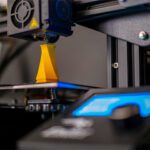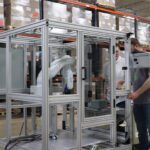The Case for Solderless Assembly
Elimination of solder from electronic circuit assembly has been suggested as one way to avoid solder’s many shortcomings. Here, Joe Fjelstad makes the case for solderless assembly.
 Soldering is a key step in the manufacturing process of electronic assemblies and has been since the earliest days of the electronics industry. It is also one of the most challenging processes to control and predict and a major source of defects and assembly failure.
Soldering is a key step in the manufacturing process of electronic assemblies and has been since the earliest days of the electronics industry. It is also one of the most challenging processes to control and predict and a major source of defects and assembly failure.
In recent years, elimination of solder from the electronic circuit assembly manufacturing process has been suggested as one way to get around solder technology’s many shortcomings. The term Solderless Assembly For Electronics (SAFE) is one of the monikers which has been applied to the general concept and one of its guiding principles is the Occam Process, which refers to 13th century philosopher William of Occam’s words of caution to his followers: “It is vanity to do with more that which can be done with less.”
Elimination of solder can in fact be accomplished relatively easily and the benefits are substantial. It can be achieved by simply reversing the manufacturing process of building printed circuit boards, placing components, and then soldering them together. Instead, all the components would be locked in place, with the component’s planar terminations exposed on the surfaces, and then the circuits applied to these “component boards” would use PCB build-up technologies, which are now well established in the PCB industry.
Bypassing the soldering process offers significant prospective improvement potential for electronic assemblies in terms of cost, reliability, security, and environmental friendliness among others. A brief review of these will help to substantiate the assertion.
Cost
Soldering technology, inclusive of the machines, materials, and processes used to make, inspect, clean, test, and rework and repair electronic assemblies, is a multibillion-dollar industry. Elimination of solder would obviate that expense. Some argue that it is impossible, but look at the recent efforts and success at embedding components to gain a measure of that argument’s validity. It is possible and it is being done; unfortunately, most of those designs still use solder to attach components to outer surfaces, which is unnecessary.
As additional support, a recent demonstration using Occam principles to redesign an assembly yielded a product with half the number of layers (six rather than 12), was ~70% smaller in terms of total area, and capable of being folded into an assembly which can occupy a footprint less than 20% of the original design with minimal increase in height. The assembly was designed to use aluminum as a base and weight was projected to be ~55-65% less than the original. Cost benefits are obvious, especially since aluminum costs only $0.98 per pound, a fraction the cost of FR4, but soldering to aluminum is very difficult at best.
Reliability
Reliability experts know the many problems with solder both in process and in the field. The vast majority of electronic assembly failures can be traced to solder joints. Moreover, the high temperatures associated with lead-free solder can damage or destroy electronic components and PCBs. In contrast, plated copper vias have proven highly reliable. Aluminum also closely matches the CTE of copper (22 versus 18 ppm/C) and it is an excellent thermal spreader.
Security
Design security is an intrinsic benefit because components are embedded and, therefore, out of sight. Teardown is still possible but much more tedious and challenging.
Environmental Concerns
Finally, with no solder and only aluminum and copper metals used, the devices have no proscribed materials making the assemblies automatically compliant to RoHS.
The fabrication of SAFE assemblies using Occam’s principles is possible using today’s infrastructure. The only thing missing is a general will to make them.
[hr]
Joseph Fjelstad is a 43-year veteran of the electronics manufacturing industry and an internationally recognized thought leader, author, and innovator in electronics interconnection technology with more than 175 US patents. He has received the IPC Presidents Award and has been inducted into both the Paul Eisler Printed Circuit Manufacturing Hall of Fame and the Jim Raby Printed Circuit Assembly Hall of Fame.







